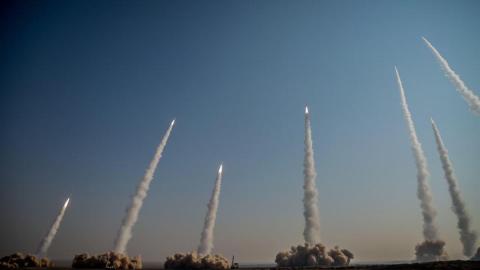US National Security Adviser Jake Sullivan recently placed Iran under the spotlight for its so-called suicide drones, which are being used against civilian targets in Ukraine. The Shahed-136 (known as the Geran-2 by Russia) are packed with explosives and flown into a target instead of returning to base. Speaking to reporters, Sullivan this month said that Tehran had chosen “to go down a road where their weapons are being used to kill civilians in Ukraine...which from our point of view, puts Iran in a place where it could potentially be contributing to widespread war crimes.”
This is the most serious charge to date by a US official regarding the use of Iranian drones in Ukraine. Days before Sullivan’s statement, Washington announced a new round of sanctions against Iran over the issue of the use of its drones by Russia. According to a press release from the Department of the Treasury, “six executives and board members of US-designated Qods Aviation Industries” and the director of Iran’s Aerospace Industries Organization were sanctioned. Last month, the EU sanctioned four Iranian officials and four entities connected to Iran’s drone program. Meanwhile, the UK recently announced sanctions against three senior officials and one company over the Iranian drones used in Ukraine.
Of course, the Iranians deny providing any drones to Russia for use in Ukraine since the war started last February. Tehran claims that the drones being used now were purchased by Russia years ago. However, this is unlikely to be the case.
Experts are now combing through the remains and debris of Iranian drones that have been found in Ukraine. Iranian drones that have been shot down, as well as fragments of the Shaheds that made it to their targets and exploded, are providing an intelligence boom for Western analysts. One of the most shocking discoveries was the amount of American and European-manufactured parts found in these drones, despite years of sanctions against Iran. This is starting to raise eyebrows in Western capitals, with politicians demanding action on closing loopholes that allow Western-manufactured items to find their way to Iran for use in weapons.
Iran benefits greatly from providing Russia with drones. In the lead-up to the war, Russia built up large currency and gold reserves. Meanwhile, Iran has been cash-starved due to years of economic sanctions. Simply put, Moscow has the cash that Tehran needs. Meanwhile, Iran has the drones that Russia needs. However, Iran is benefiting more from its deals with Russia than just financially. It is also procuring dozens of Russian-made Su-35 aircraft. This acquisition will give Iran a boost to its aerial capability that should be a major concern for policymakers in the Gulf.
Dealing with the Iranian drone threat is no easy task. For years, Iran has been wreaking havoc with its drones across much of the Middle East. Now, Eastern Europe is under threat too. However, there are five things that can be done to start pushing back.
The first is for the US to end the nuclear talks in Vienna, formally and officially. It is inconceivable that Iran can be trusted right now. Secondly, as Western policymakers learn more about Iran’s drone program and exports, new sanctions against Iranian officials and entities need to be introduced. Also, loopholes allowing Western equipment to end up in Iranian drones need to be closed.
Thirdly, pressure needs to be placed on regional countries to make transporting Iranian drones to Russia more difficult. No country that is a partner of the US should facilitate the transport or overflight passage of Iranian drones. Fourthly, the US should be working with Gulf partners to boost air defense in the region and with European allies to increase air defense in Ukraine.
Finally, there needs to be more coordination and engagement behind the scenes between the US, Israel, Ukraine and the Gulf states regarding the Iranian drone threat. There is likely no other country on the planet that has more direct experience with countering Iranian drones than Ukraine. It would be in the interest of Gulf and Israeli policymakers to learn from Kyiv. However, this might mean more support for Ukraine behind the scenes.
The Iranian drone threat, whether in the Middle East or in Ukraine, is not going away. Not only are Western analysts learning from the use of Iranian drones in Ukraine, but so are the Iranians. As more drones are used in places like Ukraine, Tehran will be able to modify and perfect its drone program, making them more capable on the battlefield. The combat testing of Iranian drones in Ukraine should be a concern for those in the Gulf.
Regrettably, it is unlikely that Iran’s export of terror to Ukraine will be limited to just drones. The big fear for Ukrainian policymakers is the introduction of Iranian ballistic missiles, like the Fateh-110, into the conflict. As Russian ballistic missile stockpiles continue to run low, it is expected that these missiles will be used by Moscow sometime this year.
From the Baltic Sea to the Arabian Sea—and every place in between—2023 is the year to start getting serious about air defense and the Iranian threat.
















